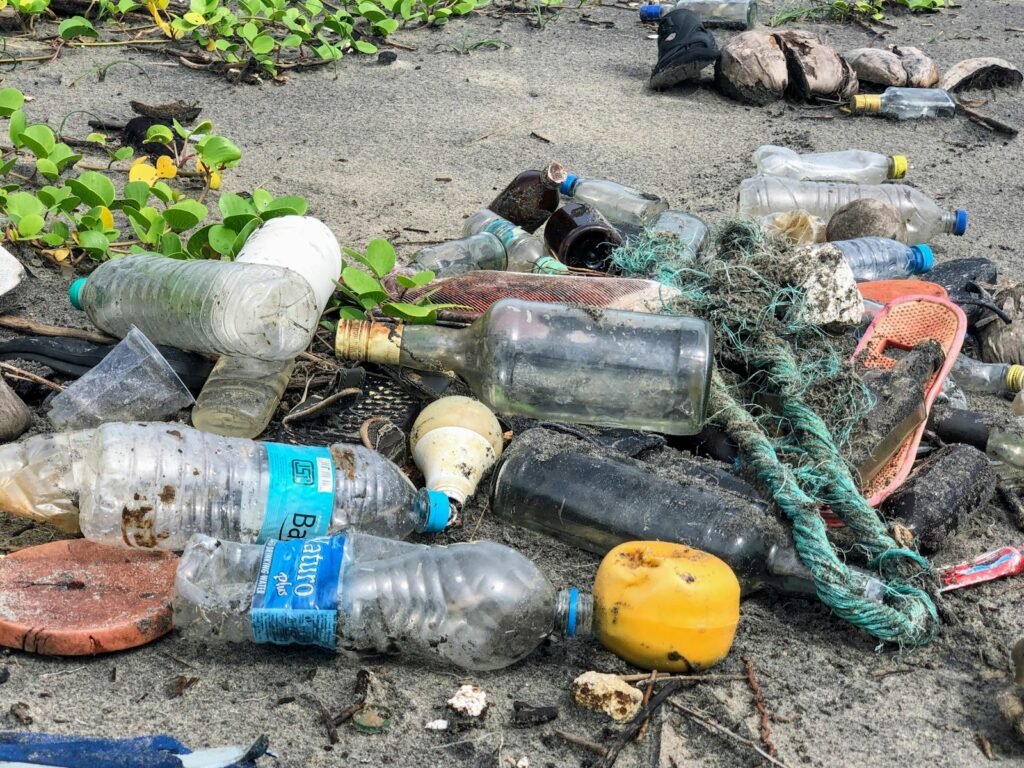Traveling is one of life’s greatest joys, offering opportunities to explore new cultures, meet people, and discover the world in ways that are both enriching and unforgettable. However, with each journey we take, there comes an impact—on the environment, on local communities, and even on ourselves. Choosing a more sustainable approach doesn’t mean compromising on experience or comfort; it simply means making choices that consider the long-term health of our planet and its people.

Sustainable travel is about reducing negative impacts while maximizing positive ones. Whether you’re planning your next adventure or looking for ways to make your current trip more eco-conscious, there are countless small steps that can lead to a significant difference. Let’s take a look at ten easy tips that will help you enjoy the world responsibly and with care.
Choose Eco-Friendly Accommodations
The place where you stay can have a big impact on your overall footprint. When booking a hotel or hostel, consider establishments that use renewable energy, conserve water, minimize waste, and support local communities. Many eco-friendly accommodations go beyond basic sustainability practices by integrating green technologies such as solar panels, rainwater harvesting systems, and locally sourced materials.
Look for certifications like LEED, EarthCheck, or Green Key when searching for places to stay. These indicators ensure that the accommodation has met specific environmental standards. Choosing an eco-conscious hotel not only reduces your personal impact but also supports businesses committed to making a positive change in the travel industry.
Use Public Transportation or Walk
Transportation is one of the most significant contributors to a traveler’s carbon footprint. Opting for public transportation, walking, or cycling can drastically reduce emissions and help preserve local environments. In cities with well-developed transit systems, using buses, trains, or subways is not only efficient but also often more scenic than driving.
If your destination has bike lanes or pedestrian-friendly streets, consider exploring on foot or by bicycle. Many tourist attractions are designed to be accessible through walking tours, making it a great way to see the sights while minimizing your environmental impact. Always try to avoid unnecessary car use and support local transportation options whenever possible.
Pack Light and Responsibly
Luggage weight directly affects fuel consumption and carbon emissions, especially on air travel. Packing light reduces the amount of fuel needed for each flight, making it a simple yet effective way to travel more sustainably. Focus on packing versatile clothing and items that can be used in multiple situations.
In addition to reducing your luggage’s size, think about what you bring along. Choose reusable toiletries over single-use plastics, opt for clothing made from sustainable or recycled materials, and avoid unnecessary products that may end up as waste after the trip. Being mindful of what you pack ensures a more eco-friendly journey without sacrificing comfort.
Support Local Businesses and Communities
Sustainable travel is not just about environmental impact—it also includes supporting local economies. When you choose to shop at locally owned stores or dine at family-run restaurants, you contribute directly to the livelihoods of people in the area. This helps ensure that tourism benefits communities rather than displacing them or overwhelming them with outside influence.
Try to avoid large international chains and instead support small businesses whenever possible. Participating in community-based tourism initiatives allows travelers to engage more deeply with local cultures while also providing economic opportunities for residents. Supporting local artisans, farmers, and entrepreneurs can have a lasting positive effect on the places you visit.
Conserve Water and Energy While Traveling
Conserving water and energy is an easy way to make your trip more sustainable, regardless of where you are. Simple actions like reusing towels instead of washing them daily or taking shorter showers can significantly reduce water consumption in hotels and other accommodations. Many eco-conscious properties already encourage these practices through their guest policies.
When it comes to energy use, turn off lights when not needed, unplug devices that aren’t being used, and consider using natural light during the day. Even small changes like these can add up over time and help reduce your overall environmental impact while traveling.
Opt for Sustainable Activities
The experiences you choose to participate in during your trip are just as important as where you stay or how you get around. Opting for activities that respect the environment, support conservation efforts, or involve local communities is a powerful way to make your travels more sustainable.
Look for tours and excursions that follow eco-friendly guidelines—such as those that avoid disturbing wildlife, minimize waste, or use non-motorized transportation when possible. Avoid activities that exploit natural resources or harm ecosystems. By choosing responsible experiences, you help ensure that the places you visit remain beautiful and intact for future generations.
Reduce Food Waste and Choose Local Cuisine
Food waste is a growing issue globally, and it’s something travelers can directly influence by being mindful of their choices. When dining out, consider portion sizes and avoid over-ordering. Some restaurants offer take-home containers to help reduce waste from leftover food. If you’re preparing meals in your accommodation, plan ahead to ensure that nothing goes to waste.
Choosing local cuisine not only supports local farmers and producers but also reduces the carbon footprint associated with long-distance transportation of food. Seasonal dishes are often more sustainable as well, since they require fewer resources to produce and transport. Prioritizing locally sourced ingredients helps minimize environmental impact while also offering a more authentic travel experience.
Use Reusable Items Instead of Single-Use Plastics
Single-use plastics are one of the most pervasive forms of pollution in many parts of the world, especially in popular tourist destinations where waste management can be inadequate. Travelers have a unique opportunity to reduce their contribution to this problem by bringing along reusable items such as water bottles, straws, shopping bags, and utensils.
Using a refillable water bottle instead of buying bottled water is an easy way to cut down on plastic use while also saving money in the long run. Many hotels now offer refill stations for guests who bring their own containers. Similarly, using your own toiletries rather than relying on single-use products can make a significant difference over time.
Offset Your Carbon Footprint
While it’s ideal to minimize emissions as much as possible, some level of carbon output is inevitable in any travel journey—especially when flying long distances. Carbon offsetting allows you to balance out these emissions by investing in environmental projects that reduce or remove greenhouse gases from the atmosphere.
Look for reputable programs that focus on initiatives such as reforestation, renewable energy development, or clean technology innovation. These efforts help ensure that your travels have a neutral impact on the climate. While carbon offsetting should be considered a last step after making other eco-friendly choices, it can provide an important way to mitigate unavoidable emissions.
Be Mindful of Wildlife and Nature
Respecting wildlife and natural habitats is essential for preserving biodiversity and ensuring that future generations can enjoy these spaces as well. Avoid activities that disturb or harm animals, such as riding elephants, taking photos with exotic animals, or purchasing products made from endangered species.
When engaging in nature-related experiences, choose those that emphasize conservation and ethical treatment of animals. Activities like guided wildlife walks, birdwatching tours, or visiting protected reserves can provide meaningful interactions without harming the environment. Always follow local guidelines for respecting natural areas and never litter, disturb nesting sites, or remove anything from the wild.
Final Notes
Each choice we make as travelers has an impact on the world around us—and these tips are just a starting point. By being mindful of our actions, supporting responsible businesses, and making small but meaningful changes, we can enjoy the beauty of the planet while helping to protect it for future generations. Whether you’re traveling across the globe or exploring your own backyard, sustainability is something that begins with awareness and ends with action.







